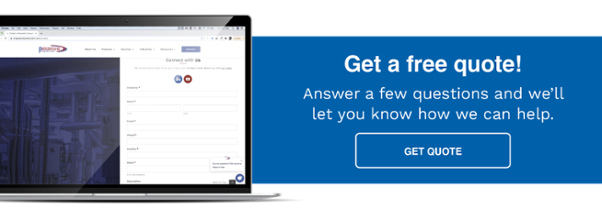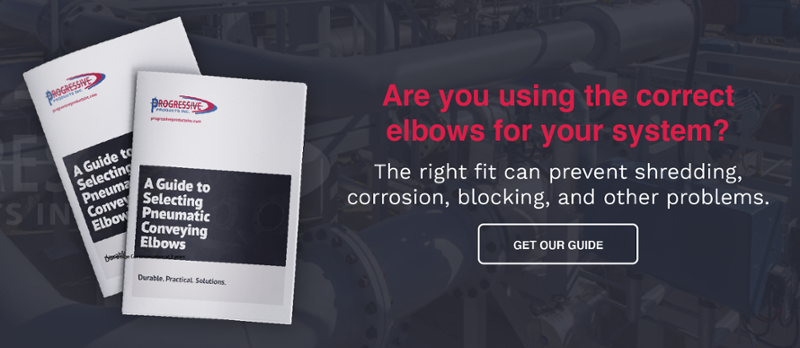Abrasion in pneumatic conveying systems is inevitable because of the moving particles of bulk materials being conveyed, as well as the vibrations of the various components. Abrasion happens when the system is operating, or more specifically, when two objects are in contact with each other and one or both are moving or sliding past each other. Vibrations or oscillations of components in place can also cause similar damage, which could lead to costly repairs.
What Is Abrasion?
Abrasion is the mechanical process of scraping away the particles of a surface, resulting in the wear or deterioration of that surface. It’s caused by solid, rough objects or particles that are in contact with a surface, such as when plastic pellets pass through pneumatic conveying pipes, thus causing abrasion to the interior surface due to the constant friction.
Abrasion is distinct from wear, which can be caused by chemicals or by the flow of water. In the case of water flow, for example, shards of broken glass thrown in a steady-flowing brook will eventually become like polished pebbles having been smoothed by the flow of water. No abrasion will occur, however, because no two solid objects are coming in contact.
Abrasion is also different from chemical weathering, which causes the slow breakdown of minerals on rocks due to acid rain. The biggest difference between these types of damage and abrasion is that abrasion is a mechanical process that unevenly scrapes away particles on a solid surface.
What Causes Abrasion In Pneumatic Conveying Systems?
Abrasive will eventually result in damage to components in your pneumatic conveying system. If one or more components deteriorate due to abrasion, it can cause productivity downtime for your company as the equipment needs to be repaired. This means income loss - but knowing what causes abrasion to occur can help you safeguard against it.
The degree of abrasion is determined by various factors. The extent of damage can increase over time if no precautionary measures are implemented. The following factors all affect the amount of abrasion in a pneumatic system:
- The type of bulk material being conveyed: Some materials are more abrasive than others, with the particle size and density being major contributors. For example, unlike plastic pellets, pet foods are light and not as hard. This makes plastic pellets and other similar materials more abrasive as they have the potential to cause more damage.
- The velocity of the particles being conveyed: As the velocity in a pneumatic conveying system increases, so does the abrasiveness. This is due to higher levels of friction and impact of the particles being conveyed.
- The pressure of the air being pumped: The air pressure is a factor of air velocity and bulk material velocity. Therefore, it’s also a factor of abrasive action.
- The direction of the particles being conveyed: Particles that change direction have more impact and frictional contact on the surface of a bend, like the interior of an elbow or pipe. If you’re constantly changing the flow direction in your system, this could put it more at risk for abrasive damage.
How To Reduce Abrasion In Pneumatic Systems
Abrasion in pneumatic systems can be significantly reduced in several ways. It can also be fairly straightforward to do, as you can look at the different factors that contribute to abrasion and simply adjust them in order to reduce the potential of damage.
You can also use abrasion resistant pneumatic components by opting for things like ceramic linings or coatings instead of bare components. Coatings like these are very useful because they encase the component in a protective outer layer, or jacket, which then takes the brunt of the abrasion.
You can install ceramic coatings or jackets on the following components:
- Elbows
- Laterals
- Tees, wyes & TYs
- Parallel laterals
- Manifold pieces
- Bifurcated Ys
Abrasion can also be reduced if you can increase the radius of the bends in your system, which can help to prevent the clumping of particles as they change direction. Velocity can be similarly reduced in this manner. You can also decrease the air pressure inside the tubes and pipes so that the material particles aren’t hitting the interior surfaces with as much force.



